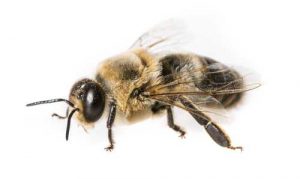While the importance of the male drone is often dismissed, we can definately state that drones are important for a colony’s reproductive success. The virgin queen receives sperm from more than a single individual leading to diverse patrilines – a critical contribution for colony-level function.
A study of a group of German scientists from the Max Planck Institute of Animal Behavior at the University of Konstanz, Baden-Wuerttemberg with computer scientists from the Free University of Berlin focused on the in-hive behavior of drones. Their research tracked 192 individually marked drones from June to October, emerged in incubators outside their colony, continuously for over 20 days to examine how drones moved and spent their time in the hive.
Their analysis of the video recordings found that young-aged drones (<7 days of age) stay within the brood nest. As drones age, they move and spend most of their time immobile outside brood containing combs at the nest periphery. Once pass their first week as an adult, an in-nest hyperactivity develops in the afternoon. The activity resulted in drones moving closer to the entrance during this period. The drones normally moved twice as fast as workers in this activity period; normal drone movement is only ¼ that of workers.
There was a strong synchronization among colony drones for when they both started and ended this daily activity. As many as 70% of the drones were actively moving. The duration of the drone shared activation period depended on the weather; when conditions were suitable for mating flights, the activation period was extended. But there was individual variation noted in the drones followed. Some increased their level of activity for as little as 15 minutes while others remained highly active for 3 hours.
During this active movement period, drones exited the hive 1-2 times (some more frequently) and remained outside 24.2 plus/minus 11.6 minutes. They maintained high movement speed when they returned to the nest.
The authors suggested that an interchange of social information influenced individual activation along with environmental conditions. Individual drones did not show a strong consistency in their relative activation timing from day to day – i.e., there are not consistent “early-to-activate” or “late-to-depart” drones, according to the authors. Activity seemed to be due to an internal clock that drones possess (Circadian rhythm). However, unfortunately no experiments were performed to sort out relative importance of socially passed information, sun information or internal rhythms.
Neubauer, Louisa C. , et al 2023. Honey bee drones are synchronously hyperactive inside the nest. Animal Behaviour doi: 10.1016/j.anbehav.2023.05.018 https://www.biorxiv.org/content/10.1101/2023.01.19.524638v1.full
Thinking out loud I wonder if the findings from this German study on drones might be put into practice? It is obvious expanding spring colonies initially have few surviving female mites (especially if you use oxalic acid (OAV/OAD) during November-January when colony brood rearing is low or non-existent). Surviving female mites biologically will have greater reproductive success once a colony begins to raise drone brood. How important is monitoring of phoretic (dispersal) mites of younger- aged drones (those still in the brood nest)? OR can we more easily and accurately monitor the drone brood for estimating growth in mite numbers? At the very least it would seem advantageous to destroy this early capped drone brood before the adults emerge as a follow-up to oxalic acid winter treatment. Fewer mites will mean less opportunity for destructive viruses to reach epidemic proportions with subsequent colony collapse.
aged drones (those still in the brood nest)? OR can we more easily and accurately monitor the drone brood for estimating growth in mite numbers? At the very least it would seem advantageous to destroy this early capped drone brood before the adults emerge as a follow-up to oxalic acid winter treatment. Fewer mites will mean less opportunity for destructive viruses to reach epidemic proportions with subsequent colony collapse.
